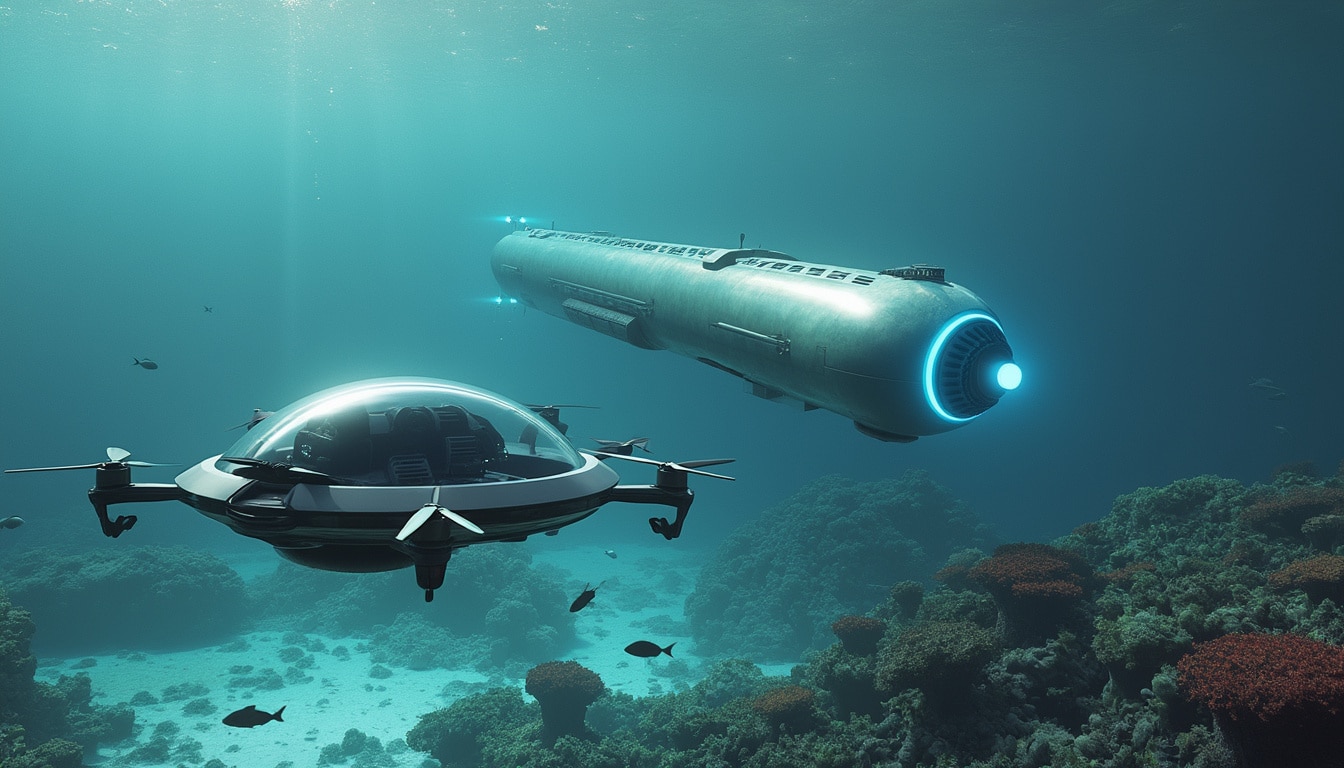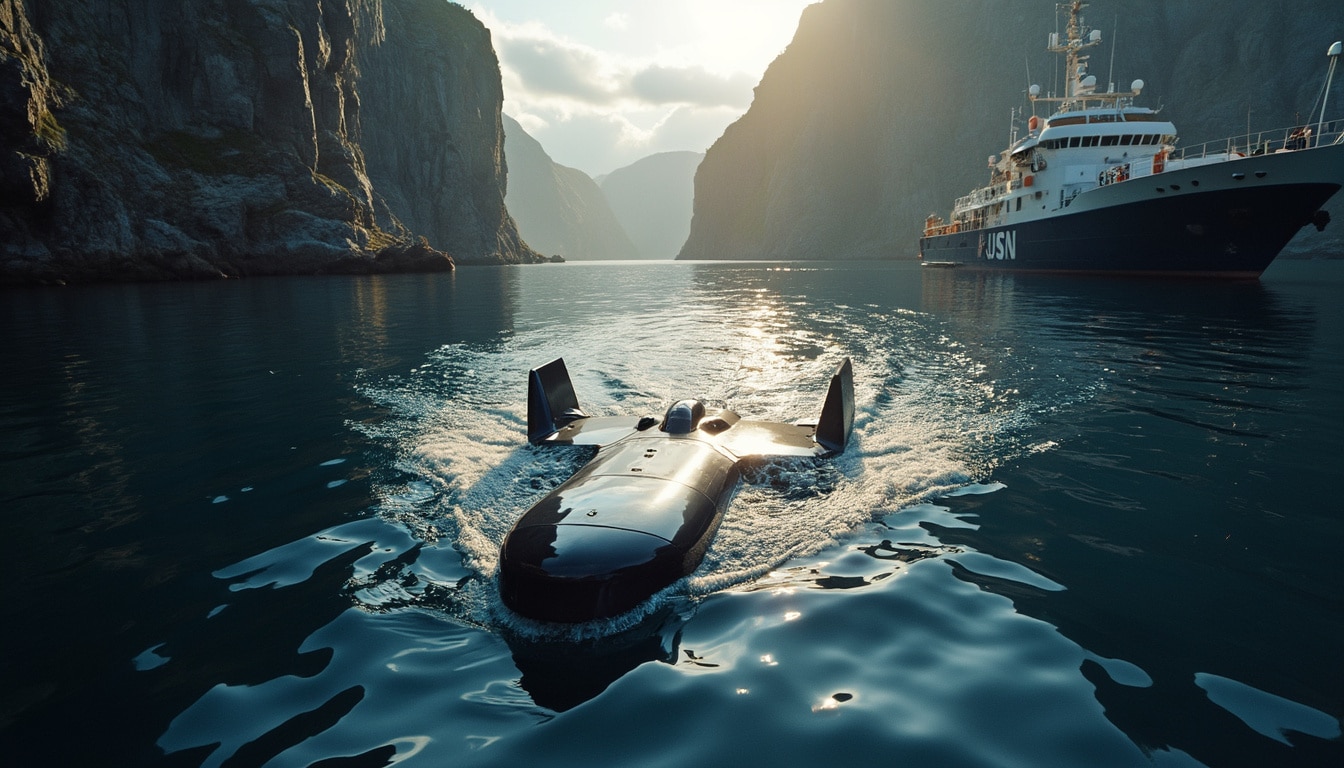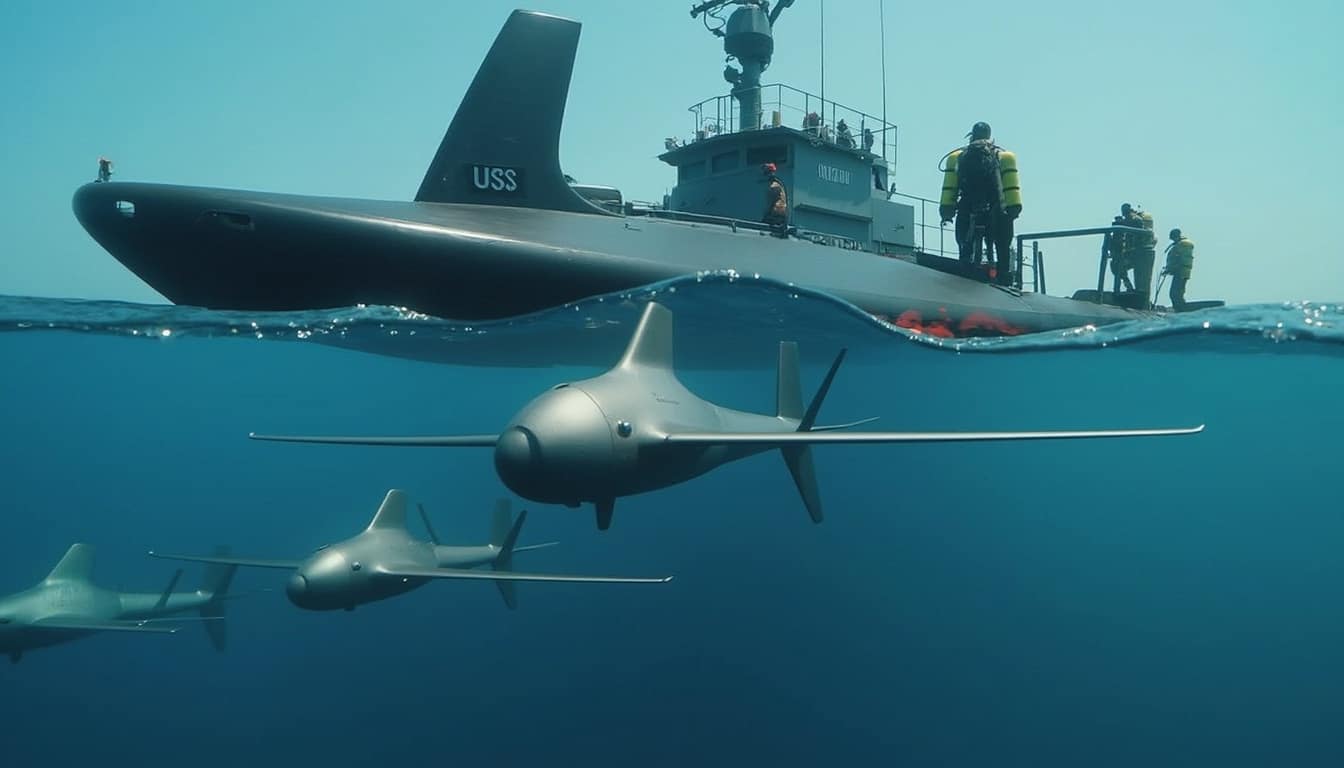The US Navy is rapidly evolving its approach to integrating underwater drones within its traditional submarine forces, drawing inspiration from the fast-paced innovation culture of SpaceX. As a testament to this shift, the Navy is employing a “SpaceX approach” to develop and refine its technology, allowing feedback from personnel operating the systems to shape the design of defense technology. This strategy is not just about improving military hardware, but also about enhancing naval warfare capabilities through advanced robotics and intelligence-gathering tools. With the deployment of uncrewed underwater vehicles (UUVs) like the Remus 600 alongside submarines, the Navy is expanding its operational reach and effectiveness in various maritime environments, including challenging terrains.
The integration of these technologies has a dual purpose; it extends the US Navy‘s operational scope while also providing a cost-effective solution to ocean exploration and surveillance tasks. The ongoing collaboration between traditional submarine operations and innovative unmanned systems marks a significant advancement in military innovation, demonstrating that the future of naval warfare is increasingly leaning towards automation and unmanned capabilities. This article delves deeper into the Navy’s strategy, the potential of underwater drones, and what is on the horizon for aerospace and military technologies.
Understanding the ‘SpaceX Approach’ in Military Innovation
In recent years, the US Navy has adopted an unconventional methodology akin to that of SpaceX, characterized by rapid prototyping and iterative testing. Submarine Forces Commander Vice Adm. Robert Gaucher emphasized that getting systems into operation quickly allows for learning in real-time—an approach widely recognized as integral to modern innovation.

Rapid Deployment and Iterative Testing
The Navy’s mantra recalls SpaceX’s ethos of ‘build, test, and learn’. This model enables swift feedback from crews who operate the underwater drones, facilitating immediate adjustments based on operational performance. For instance, during recent trials with the Virginia-class submarine USS Delaware, the Navy tested the Remus UUV 600 in various conditions, aimed at expanding its covert operational capabilities. These trials yielded valuable insights into how unmanned vehicles could assist in complex mission profiles, from covert surveillance to active reconnaissance.
Moreover, repeating this testing process enables the refinement of technological capabilities. The adaptability of systems like the Remus, designed for various depths, mission durations, and speeds, enhances the Navy’s ability to deploy drones in challenging environments which traditional submarines might find difficult to navigate.
Benefits of Underwater Drones in Modern Naval Operations
Underwater drones serve numerous pivotal roles in modern naval operations. One significant advantage is their capacity for surveillance and reconnaissance. Smaller and less detectable than traditional submarines, UUVs can operate in contested waters, gathering intelligence without risking human lives or expensive assets. They are also attritable, meaning that they can be sacrificed to meet mission objectives without incurring exorbitant losses.
Vice Adm. Gaucher has pointed out that the incorporation of uncrewed systems enhances the Navy’s operational flexibility. These underwater drones can extend the range of naval missions, supporting everything from intelligence gathering to logistical support. The deployment of UUVs alongside established naval forces may reshape the future of maritime warfare, paving the way for a more dynamic and responsive fleet that can react to evolving threats.
Case Studies: Successes and Challenges of Underwater Drone Integration
The transition towards incorporating UUVs into the Navy’s operational framework hasn’t been without challenges. However, significant successes have already been achieved, illustrating the potential these systems hold for revolutionizing naval warfare.

Deployment of the USS Delaware and Remus UUV
The deployment of the Virginia-class submarine USS Delaware alongside the Remus UUV 600 in Norway’s fjords serves as a flagship example of the integration efforts. The trials conducted in these challenging terrains provided invaluable data on performance and adaptability. Gaucher noted that this cooperation led to operational tactics that enhance the Navy’s capacity to remain undetected while engaging in surveillance tasks.
Using geographic features such as fjords not only tests the limits of these drones but also provides crucial feedback on performance metrics. This enhances the understanding of how UUVs can operate in curvilinear environments, which differ markedly from open ocean operations. Additionally, this testing contributed to developing novel tactics that streamline the development of operational doctrines for utilizing these uncrewed systems.
Challenges Ahead: Cost, Training, and Development
Despite the successes observed, integrating underwater drones into naval operations is fraught with challenges. Developing a reliable training regimen for crews to effectively operate and maintain these systems is essential. The Navy has instituted various training programs designed to familiarize personnel with the technology, but the pace of advancements necessitates continuous education and adaptation.
Moreover, funding remains an essential consideration. Allocating resources to continue developing next-generation underwater drones while maintaining traditional military infrastructure requires strategic foresight. As defense budgets fluctuate, ensuring sustained investment in robotics and innovation is fundamental for the continued evolution of the Navy’s operational capabilities.
The Future of Naval Warfare and Underwater Drones
The collaboration between traditional naval forces and emerging robotic technologies heralds a new chapter in military engagement. The Navy’s commitment to innovation positions it as a frontrunner in exploring the potential of UUVs for the next generation of naval warfare. As international tensions rise and contested waters become more common, the speed at which the Navy can deploy innovative solutions will be critical.

Collaboration with International Forces
Ongoing collaborations with NATO allies are paving the way for shared experiences and joint exercises, further enhancing the development of submerged unmanned vehicles. Joint initiatives such as Dynamic Messenger exercises allow various military branches to experience and implement drone-centric missions collaboratively. Upcoming exercises will demonstrate how UUV integration not only expands investigative capabilities but also fortifies alliances for joint operational readiness.
Innovative Solutions and Defense Technology Advancements
As defense technology continues to evolve, exploring the potential of ocean exploration through underwater drones could revolutionize both military and civilian applications. Uncrewed systems are being designed with interchangeable capabilities—such as varied payloads and energy sources, further heightening their versatility and reducing operational costs. The Navy’s collaboration with companies like Anduril Industries is pivotal in driving this evolution.
| Aspect | Importance |
|---|---|
| Adaptability | Ability to conduct missions in diverse environments |
| Cost-Effectiveness | Reduces operational cost compared to manned vessels |
| Operational Range | Increases range and duration of missions |
| Data Collection | Provides critical intelligence for strategic decisions |
| Collaboration | Enhances integration with allied forces |
The ongoing innovations led by the US Navy and tech companies in underwater drone capabilities set the stage for a transformative future in military technology. As the frontiers of underwater operations are explored, it is imperative to remain vigilant. The competition among global powers intensifies, making the evolution of the Navy’s capabilities through emerging technologies all the more essential.




Leave a Reply